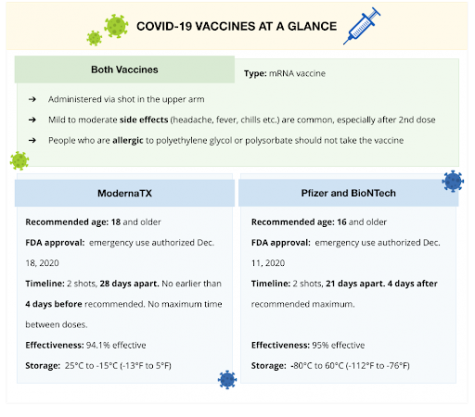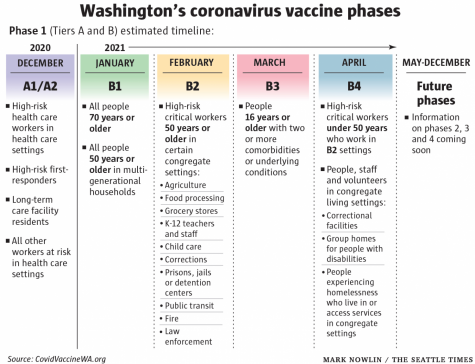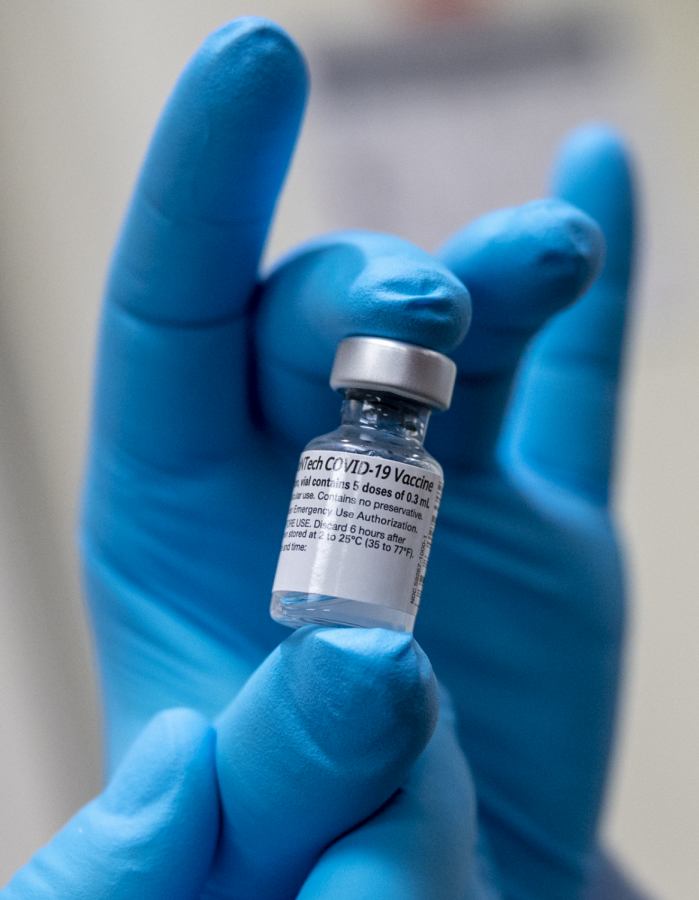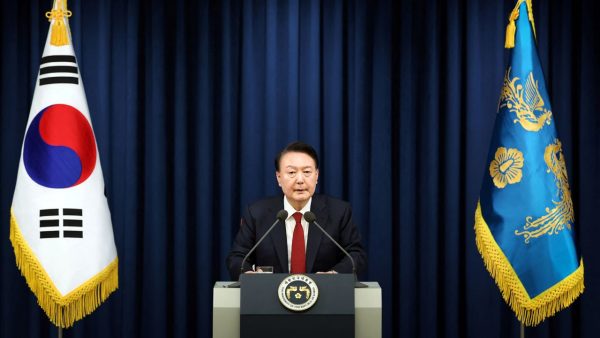How COVID-19 vaccines are being distributed
Since Pfizer and Moderna have come out with their COVID-19 vaccines, the United States has been eager to roll out vaccinations to as many people as possible. President Donald Trump cited Project Warp Speed as an efficient way to get vaccines to as many people as possible throughout the US, while ensuring that the most immunocompromised get the vaccine first. But how effective has the vaccine distribution process proven to be?
In early December, Washington state received its first shipments of vaccines and began to vaccinate first responders and high-risk healthcare workers. Distribution of these vaccines was a massive logistic challenge as both the vaccines had to be kept at extremely cold temperatures and could not be refrozen if thawed (CDC). Nevertheless, according to Washington State Secretary of Health Dr. Shah, as of Jan. 3, 522,550 doses of the vaccine had been delivered and 126,602 total doses had been administered. That being said, thus far largely only healthcare workers and a limited number of elderly folk have received the vaccine.

As per Washington state’s initial plan for the distribution of COVID-19 vaccines Washington state should be beginning phase B2 by now (CovidVaccineWA.org). This would mean that the majority of people aged 65 or older and all healthcare workers would have been vaccinated by now. But vaccine roll out thus far significantly slower than expected; as of right now Washington state is still at the beginning of phase B1.

In a conference on January 26th, Governor Inslee claimed that the number of vaccinations in the state was increasing daily and stated that his goal is to reach 45,000 vaccinations each day as soon as possible. Inslee also announced that the Federal government would be increasing Washington state’s vaccine allotment by 16%. He said that with this increase, the state’s number of daily vaccinations are expected to increase significantly.
The state also has plans to begin vaccinating teachers this month. In early January the Office of the Superintendent of Public Instruction (OSPI) and healthcare provider Kaiser Permanente announced a partnership to provide vaccines to educators aged 50 and up. Younger teachers are slated to be eligible for the vaccine by April.
Despite its ambitious plans and strict precautions, according to CDC data, Washington state has a relatively low rate of vaccinations. Currently all people aged 65 and up- about 1.5 million Washingtonians according to the state Department of Health- are eligible for the vaccine, but many have not received them.
Now that Washington is in a stage where vaccines are being rolled out to those in higher risk groups, my family was thrilled to hear that my grandparents, all over the age of 75, should be some of the first to receive the vaccine. Their process for getting it, however, was not an easy one. For my paternal grandparents, it was simply a stroke of luck. Since they live in a smaller county in Washington, there were too many doses to give out to too few people. My grandparents were lucky enough to get an impromptu appointment and were vaccinated in early January.
For my maternal grandparents in a much larger county, the process was much more difficult. Luckily, they had my mom, who was constantly on the lookout for appointments and openings online. My grandmother, someone not particularly technologically savvy, would likely still not have the vaccine if not for the hours of research my mom and grandfather did. My grandfather in particular had to get up at 3 in the morning sometimes to check for appointments, because they filled up very quickly. Eventually one of his early morning searches paid off, and he and my grandmother were vaccinated in mid-January. Both sets of grandparents are still waiting on their second dose, but when they got their first dose they were immediately signed up for a second appointment. Unfortunately, the current process seems to require constant vigilance, so for anyone with an elderly relative, I strongly encourage you to make sure they are able to set up an appointment, and if not, help them.
The Pfizer and Moderna vaccines brought a great deal of hope that perhaps this pandemic could be entering its final chapter. Despite the claims that vaccines will be distributed quickly, however, the distribution of vaccines has not lived up to the initial plan. There is a lot of work going into getting the vaccine on the part of both the recipients and the distributors, and it seems that the process will continue to be slower than anticipated. Nevertheless, vaccines are still being distributed daily and the process is likely to speed up as more vaccines become available and the distribution operation is refined. For now the vaccine needs to make it to those that need it most, so be sure to help those in high-risk groups around you find resources and contact their clinicians to ensure that they can receive the vaccine.








Wendy Wands • Feb 12, 2021 at 12:32 pm
Very factual article, and all on tract with what I have been reading. My husband in the 65 older category could not get his 1st appt. until end of Feb., I have read that 2B which would be me (50 and over educator) would start in March, unless we get major vaccines, I don’t know how that could happen.Then I would be concerned that my husband’s 2nd dose would be gone for him. I think they should get each group done, then move to the next.
Thanks…